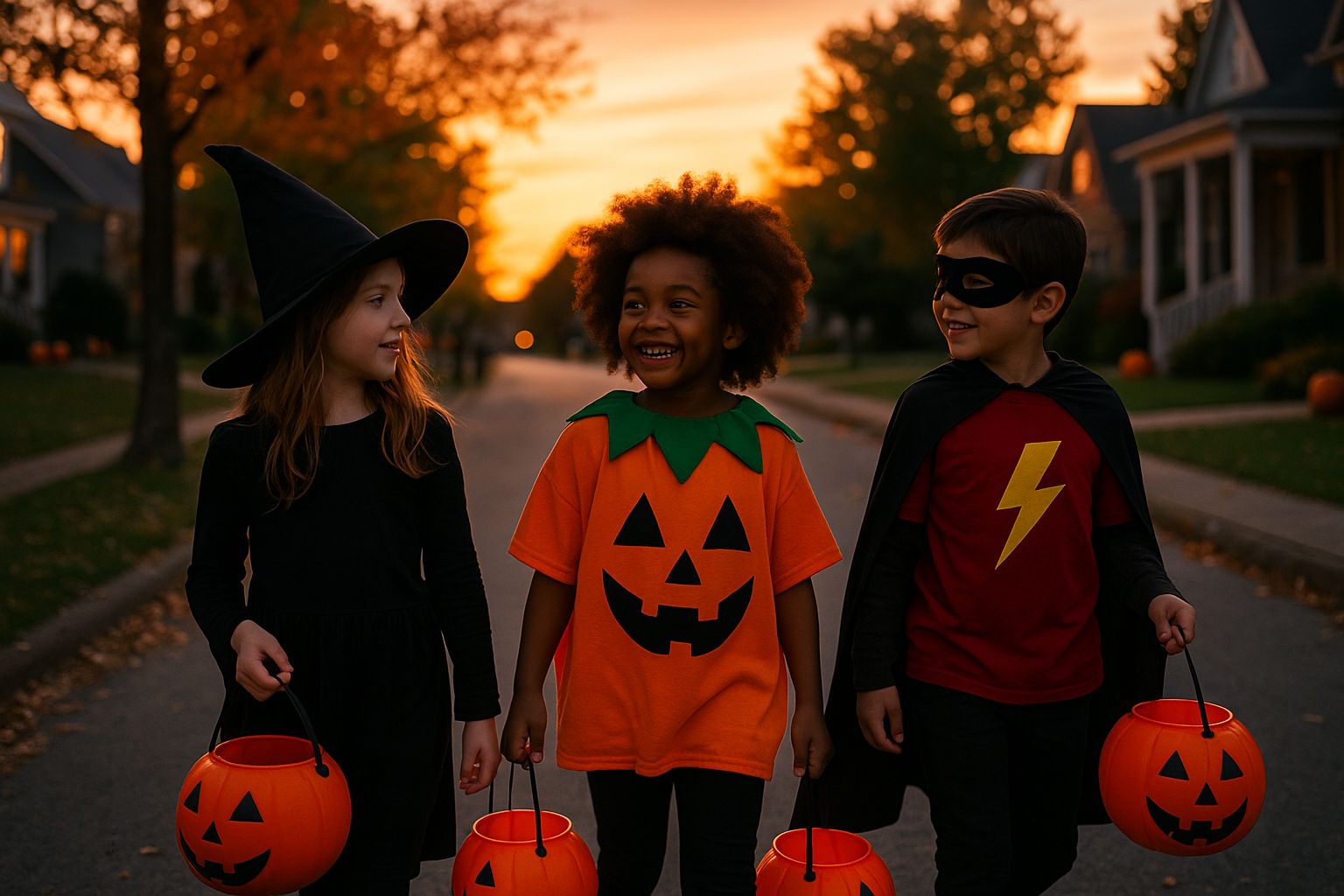
Every October, the same question haunts parents, kids, and neighbors alike: when are the official trick or treating times? The answer isn’t as simple as a fixed national schedule. Trick-or-treating is a mix of tradition, safety, and local rules — and knowing the right timing makes the difference between a smooth, candy-filled night and a stressful scramble.
Why Trick or Treating Times Matter
Trick-or-treating is more than costumes and candy; it’s community ritual. When everyone in a neighborhood follows the same timeframe, the night feels coordinated and safe. Neighbors know when to expect knocks at the door, parents know when to head out with kids, and kids know they’ll be walking into lit-up porches instead of dead ends.
Without an agreed timeframe, chaos sets in. Some kids head out too early while people are still at work, others push too late into the night when lights are off and streets are less safe. Sticking to clear times keeps the night fun, not frustrating.
And there’s another dimension: predictability makes the tradition sustainable. Communities that consistently honor certain hours create expectations year after year. That sense of rhythm reassures parents and homeowners alike, making Halloween something people look forward to instead of dread.
Typical Trick or Treating Times Across the U.S.
There’s no single nationwide rule, but a pattern emerges. In most towns and suburbs, trick-or-treating kicks off around 5:30 or 6 p.m. and winds down by 8 or 9 p.m. Younger kids usually start early, while older kids stretch it later.
Some cities officially announce hours through local government or police departments. Others leave it to neighborhood tradition. Rural areas may start earlier because houses are spaced farther apart, while urban settings may run a little later due to foot traffic and community events.
The sweet spot? Aim for just after dusk. Too early, and porch lights aren’t on. Too late, and you risk tired kids, empty bowls, and grumpy neighbors.
It’s also worth noting that some communities now host “trunk or treat” or organized events in parking lots, often in the afternoon. These supplement door-to-door trick-or-treating, but they don’t replace it. If your city leans toward organized events, expect door-to-door traffic to be a little lighter and earlier than the national norm.
Safety and Etiquette
Trick-or-treating is built on an unspoken code. Porch lights on? That’s an open invitation. Lights off? Move along. Staying within the expected timeframe respects both neighbors and other families.
Parents should also balance fun with safety: make sure kids are visible with glow sticks or reflective tape, and avoid pushing past 9 p.m. when visibility drops and traffic rises. And if your community sets official times, stick to them — it keeps everyone on the same page.
Don’t forget neighborly courtesy. Encourage kids to take just one or two pieces if a bowl is set out, and keep noise down when walking between houses. The night works because of mutual respect: families get fun, homeowners get to participate, and nobody feels overwhelmed.
The Bottom Line
Trick or treating times usually fall between 6–9 p.m., but the exact schedule depends on your town, your neighbors, and your kids’ ages. The key is alignment: when families and communities sync up, Halloween becomes the festive, collective experience it’s meant to be.
So check your city’s website, ask your neighbors, and plan ahead. Trick-or-treating works best when everyone’s clocks strike spooky at the same hour.
And remember — no matter the exact start or end, Halloween is about connection. It’s the one night where neighbors open doors, kids share excitement, and communities come alive. Get the timing right, and the magic lasts long after the candy is gone.
FAQ: Trick or Treating Times
What time should toddlers go trick-or-treating?
Earlier is better. For toddlers, start around 5:30 or 6 p.m. when it’s still light out. They’ll have fun, get candy, and be home before bedtime.
What if my town doesn’t announce trick or treating times?
Follow the neighborhood norm: start at dusk (around 6 p.m.) and end by 8:30 or 9 p.m. If in doubt, ask neighbors or check local community groups online.
Is it rude to knock after 9 p.m.?
Yes. Most families wrap up by then, and many households turn off porch lights. Aim to finish before 9 to stay polite and safe.
Do adults ever trick-or-treat?
Older teens often go out in groups, and some communities welcome them as long as they’re respectful. Adults usually stick to accompanying kids or enjoying the festivities at home.Are there places with different rules?
Yes — some towns set official times as early as 4–7 p.m., while others stretch until 9. Always check your local government website for announcements.


